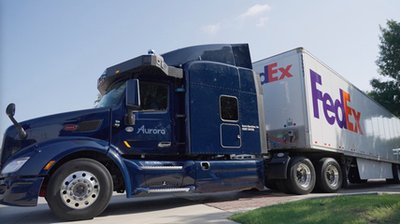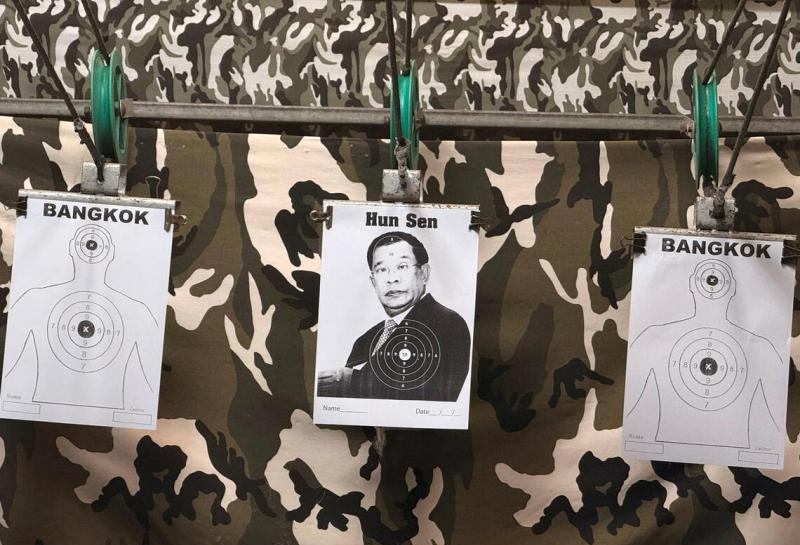
Recently, foreign media reported that Aurora Innovation, a developer of autonomous driving trucks, has launched unmanned commercial trucks that can operate day and night. It claims that its lidar technology can detect objects 450 meters away in complete darkness. This news has drawn the industry's attention to the technology of self-driving trucks. However, from a technical perspective, there are still many technical details and potential challenges worth discussing.
From the perspective of lidar technology, Aurora emphasizes that it can detect objects 450 meters away in complete darkness, which is undoubtedly an attractive technical highlight. However, in practical applications, the performance of lidar technology is not solely measured by the detection distance as a single indicator. Detection accuracy, the ability to recognize different objects, and stability in complex environments are all key factors that determine whether it can truly meet the requirements of all-weather operation. In a completely dark environment, although lidar can emit laser and receive reflected signals to detect objects, the reflectivity of laser varies among objects of different materials, which may lead to deviations or omissions in the detection of certain objects. For instance, some objects with smooth surfaces but low reflectivity may be difficult to accurately identify in the detection of lidar, thus posing a hidden danger to the safe driving of self-driving trucks.
Furthermore, lidar technology also faces the problem of environmental interference in practical applications. Severe weather conditions, such as heavy rain and thick fog, can have a significant impact on the detection effect of lidar. In heavy rain, raindrops will scatter and absorb the laser, causing the reflected signal received by the lidar to weaken, thereby reducing the detection distance and accuracy. Thick fog can block the laser, making it difficult for lidar to accurately detect distant objects. Although Aurora claims that its liDAR technology can operate in complete darkness, there are not yet detailed technical descriptions and actual test data to support its ability to cope with these complex environments.
From the perspective of the overall architecture of the autonomous driving system, whether Aurora's autonomous trucks can truly operate around the clock also depends on the performance of its sensor fusion technology and decision-making algorithms. Sensor fusion technology integrates and analyzes data from various sensors such as lidar, cameras, and millimeter-wave radars to obtain more comprehensive and accurate information about the surrounding environment. However, there may be problems of data errors and inconsistent timing among different sensors. How to effectively fuse these data is a challenging technical problem. If the sensor fusion technology is not perfect enough, it may lead to incorrect judgment of the surrounding environment by the autonomous driving system, thereby affecting driving safety.
The decision-making algorithm makes corresponding driving decisions based on the information obtained from sensor fusion, such as acceleration, deceleration, and steering. Under round-the-clock operation, decision-making algorithms need to be capable of handling various complex traffic scenarios and unexpected situations. For instance, when driving at night, one might encounter pedestrians or animals that suddenly appear. The decision-making algorithm needs to be able to respond quickly and accurately to avoid collisions. However, at present, the decision-making algorithms of autonomous driving systems still have certain limitations when dealing with some extreme situations and complex scenarios, and further technical optimization and improvement are needed.
In addition, Aurora mentioned that it began operating driverless vehicles around the clock just three months after its launch and expanded its terminal network. However, from the perspective of technological development, it remains questionable whether such a rapid development speed indicates that its technology has undergone thorough testing and verification. Autonomous driving technology is a highly complex and safety-related field that requires extensive actual road tests and data accumulation to continuously improve and optimize. Achieving large-scale round-the-clock operations in a short period of time may encounter some unknown technical risks and security hazards.
To sum up, although Aurora's self-driving truck claims all-weather operation capabilities and has certain technical highlights in terms of lidar detection range and other aspects, from a technological perspective, there are still many issues that need further exploration and resolution in terms of detection accuracy, environmental adaptability, sensor fusion technology, decision-making algorithms, and technical verification. The true maturity and wide application of autonomous truck technology still require more efforts in areas such as technological research and development, testing and verification, and safety assurance.

Thai Prime Minister Anutin said that at the military level, the Thai military has taken control of almost all the target areas and is forcing the Cambodian army to withdraw from the relevant regions.
Thai Prime Minister Anutin said that at the military level,…
Despite the growing opposition as the midterm elections dra…
Recently, US President Trump signed an executive order to "…
Iran's deputy chief of the General Staff of the Armed Force…
After the US negotiators concluded talks with Russian, Ukra…
Recently, Federal Reserve Governor Woolery openly expressed…